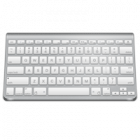Essentials: Useful Mac Keyboard Commands

Heres a list of the common Mac OS X keyboard shortcuts. A keyboard shortcut is a way to invoke a function in Mac OS X by pressing a combination of keys on your keyboard. These can help you to significantly speed up daily computer tasks.
To use a keyboard shortcut, or key combination, you press a modifier key with a character key. A modifier key is a part of many key combination’s. A modifier key alters the way other keystrokes or mouse clicks are interpreted by Mac OS X. Modifier keys include:
⌘ = Command, the most common modifier.
⌥ = Option or Alt.
⇧ = Shift
^ = Control. Not used as frequently but is still there.
Startup keyboard shortcuts
Press the key or key combination until the expected function occurs/appears (for example, hold Option during startup until Startup Manager appears, or Shift until “Safe Boot” appears). Tip: If a startup function doesn’t work and you use a third-party keyboard, connect an Apple keyboard and try again.
⌥ = Display all bootable volumes (Startup Manager)
⇧ = Perform Safe Boot (start up in Safe Mode)
C = Start from a bootable disc
T = Start in FireWire target disk mode
N = Start from NetBoot server
X = Force Mac OS X startup (if non-Mac OS X startup volumes are present)
⌘ + V = Start in Verbose Mode
⌘ + S = Start in Single User Mode
Basic Shortcuts
Here are some of the most important shortcuts that should apply to all your Mac applications.
⌘ + Q = Quit
⌘ + W = Close window
⌘ + O = Open a file in your application
⌘ + P = Print
⌘ + C = Copy
⌘ + V = Paste
⌘ + X = Cut
⌘ + S = Save
⌘ + Z = Undo
⌘ + A = Select All
⌘ + Y or Space = Quicklook
⌘ + Tab = Cycle through windows
Other Shortcuts
This is the list where every other shortcut resides. Have a look through and see if there is anything which is of interest to you.
⌘ + ⇧+ 3 = Take fullscreen picture
⌘ + ⇧ + 4 = Take selected area screenshot
⌘ + ⇧ + 4 + Space = Take screenshot of window or menu
⌥ + ⌘ + Escape = Bring up Force Quit window
⌘ + Space = Spotlight search
⌘ + ` (back tick) = Cycle through applications windows
⌘ + . = Cancel operation
⌘ + ⇧ + ? = Open help
⌘ + I = Get Info
⌘ + [ = Go backwards in history in Finder
⌘ + ] = Go forwards in history in Finder
⌘ + Up Arrow = Go to previous folder in hierarchy
⌘ + Down Arrow = Open folder of file in Finder
⌘ + ⌥ + T = Show hide Finder’s toolbar
⌘ + Delete = Move item to Trash
⌘ + ⇧ + Delete = Empty Trash
⌘ + E = Eject disk
⌘ + F = Find
⌘ + G = Next result in Find option
⌘ + H = Hide application
⌘ + M = Minimize
⌘ + N = New window
⌘ + ⌥ + W = Close all windows
⌘ + ⇧ + Z = Redo
⌘ + ⇧ + H = Go to Home folder
⌘ + ⇧ + D = Go to Desktop
⌘ + ⇧ + C = Go to Computer
⌘ + ⇧ + K = Go to Network
⌘ + ⇧ + I = Go to iDisk
⌘ + ⇧ + A = Go to Application
⌘ + ⇧ + U = Go to Utilities
⌘ + ⇧ + G = Go to folder
⇧ + ⌘ + Q = Log out
⇧ + ⌘ + ⌥ + Q = Log out immediately.
⌘ + D = Duplicate in Finder
⌘ + ⌥ + 8 = Turn on Voice Over
⌘ + ⌥ + + = Zoom in (if turned on)
⌘ + ⌥ + - =Zoom Out
⌘ + ⌥ + D = Show/Hide Dock
^ + Eject = Show shutdown dialog
^ + ⌘ + Eject = Close all and restart
⌥ + ⌘ + Eject = Sleep
⌘ + Shift + F = Find file by name
⌘ + R = Refresh widget





